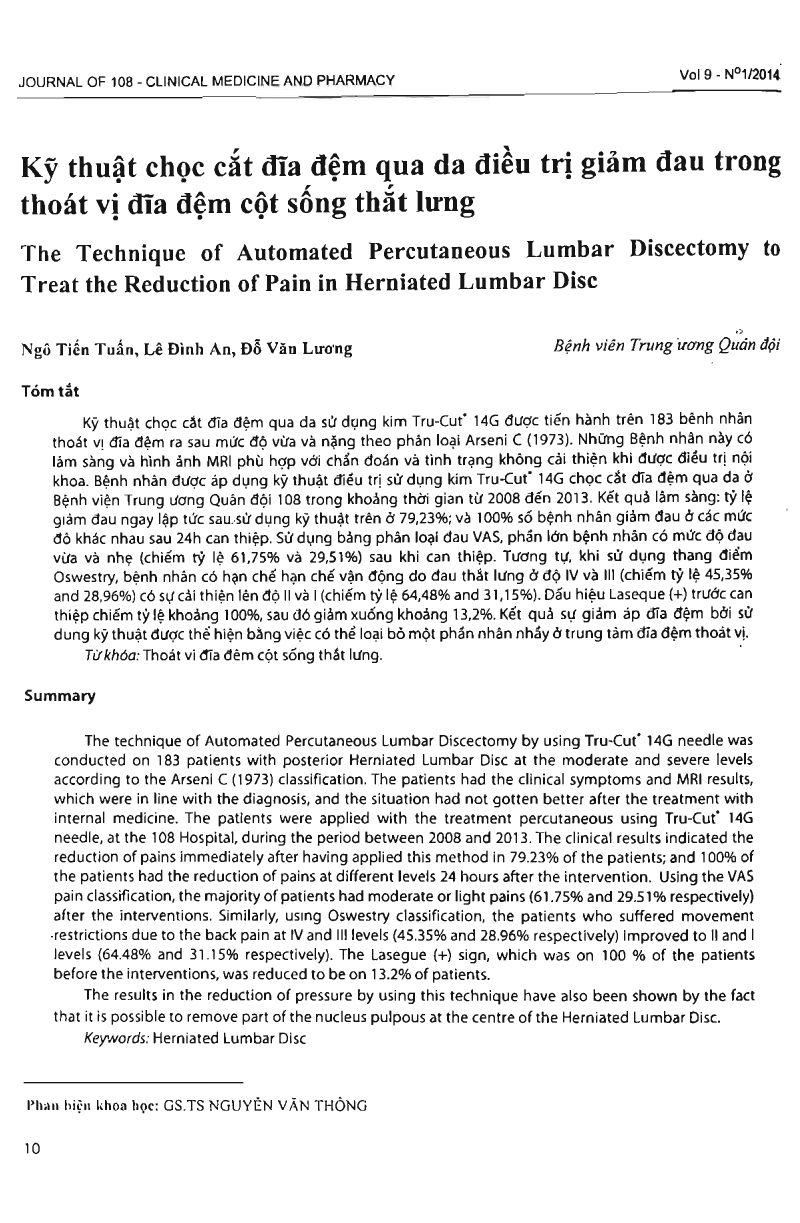
The technique of Automated Percutaneous Lumbar Discectomy by using Tru-Cut 14G needle was conducted on 183 patients with posterior Herniated Lumbar Disc at the moderate and severe levels according to the Arseni C (1973) classification. The patients had the clinical symp,toms and MRI results, which were in line with the diagnosis, and the situation had not gotten better after the treatment with internal medicine. The patients were applied with the treatment percutaneous using Tru-Cut 14G needle, at the No.108 Hospital, during the period between 2008 and 2013. The clinical results indicated the reduction of pains immediately after having applied this method in 79.23 percent of the patients; and 100 percent of the patients had the reduction of pains at different levels 24 hours after the intervention. Using the VAS pain classification, the majority of patients had moderate or light pains (61.75 percent and 29.51 percent respectively) after the interventions. Similarly, using Oswestry classification, the patients who suffered movement restrictions due to the back pain at IV and III levels (45.35 percent and 28.96 percent respectively) improved to II and I levels (64.48 percent and 31.15 percent respectively). The Lasegue (+) sign, which was on 100 percent of the patients before the interventions, was reduced to be on 13.2 percent of patients. The results in the reduction of pressure by using this technique have also been shown by the fact that it is possible to remove part of the nucleus pulpous at the centre of the Herniated Lumbar Disc.
- Đăng nhập để gửi ý kiến
